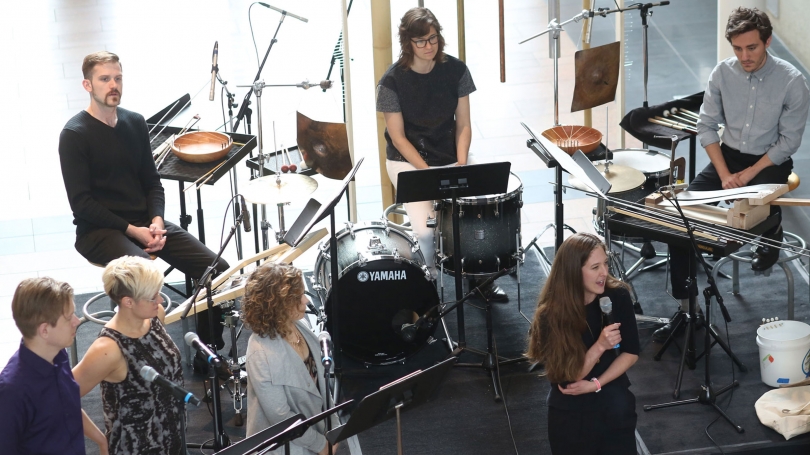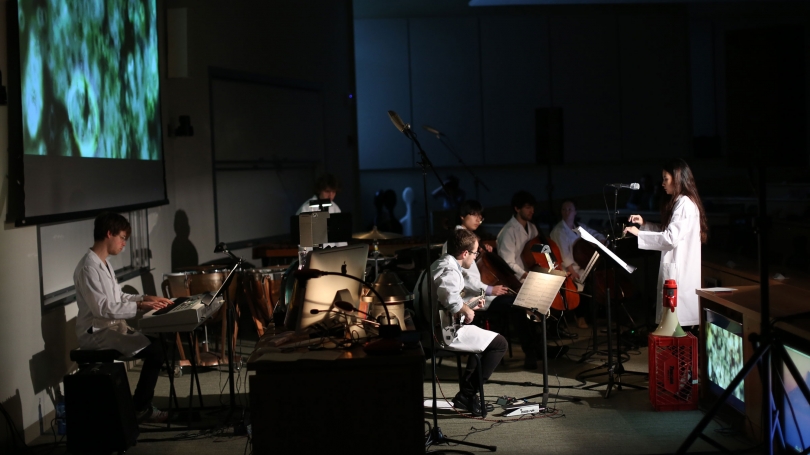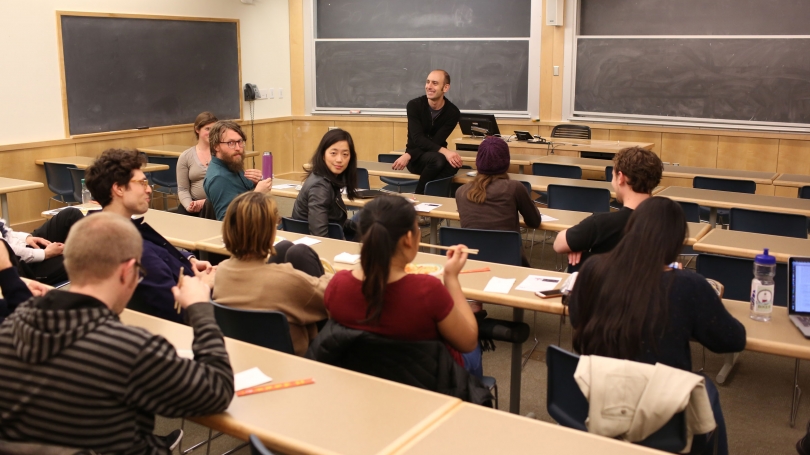Next Phase in Hop’s Innovative Program Linking New Music and Stem Subjects
How do STEM fields—science, technology, engineering and mathematics—inspire music, and vice versa? This question is at the heart of STEM Arts, a groundbreaking program by the Hopkins Center for the Arts in which innovative young composers “embed” among STEM subject faculty and students and, from that experience, create a new musical work, premiered at Dartmouth.
Now in its fourth year, STEM Arts projects have brought together three emerging composers with Dartmouth researchers and students: Fay Wang (2013-14) and the Dartmouth Department of Biological Sciences; Tristan Perich (2015-16) and the Mathematics Department; and Molly Herron (2015-2017) and the Thayer School of Engineering.
On July 11, the Hop announced the release of a new film following Herron’s collaboration with Thayer, as well as the start of the next phase of STEM Arts: composer, vocalist and multi-instrumentalist Carla Kihlstedt’s collaboration with the Dartmouth Environmental Studies Program. Kihlstedt will start working with Environmental Studies this fall; the resulting work will premiere in the 2018/2019 academic year.
As with previous STEM Arts project, Kihlstedt’s work is funded by the Hop’s Mellon Foundation-funded initiative to more broadly engage students in the arts, especially classical music. The initiative has included substantive, multi-campus research that—among other findings—indicates that students more readily engage in the arts when they see the arts’ connection to other academic areas.
“This project demonstrates the parallel creativity that goes on between scientists and composers,” said Hop Programming Director Margaret Lawrence, who worked with Environmental Science faculty to select Kihlstedt. “We’re excited work with so many brilliant Dartmouth STEM faculty—and, much like the sciences, we don’t restrict the directions these composers may go. This learning is at the very heart of a liberal arts education. Carla, who is already working on her own song cycle about the ocean’s health, is deeply committed to environmental issues. She’s a fantastic composer and an extraordinary performer, and we’re thrilled to start working with her.”
As with previous STEM Arts project, Kihlstedt’s work is funded by the Hop’s Mellon Foundation-funded initiative to more broadly engage students in the arts, especially classical music. The initiative has included substantive, multi-campus research that—among other findings—indicates that students more readily engage in the arts when they see the arts’ connection to other academic areas.
Each STEM Arts collaboration has taken its own form, based on the interests of the composer and the faculty and students with whom they were embedded. Herron’s project drew her into Thayer’s laboratories and classrooms, where she met students and faculty and helped teach a hands-on class on the design and creation of acoustic instruments. Out of that class came instruments that were used in the performance.
Born in 1971, Kihlstedt went from extensive studies in classical violin to a career as a prominent violinist, vocalist and composer in both classical and improvised music. She is a founding member of Tin Hat, Sleepytime Gorilla Museum, The Book of Knots, Causing a Tiger and Rabbit Rabbit. Other musical projects include 2 Foot Yard, Charming Hostess and Minamo (Carla Kihlstedt & Satoko Fujii). She is a recognized classical composer who has performed with the International Contemporary Ensemble (ICE), has worked occasionally on projects with Tom Waits and Fred Frith, and recorded numerous albums as a guest or session musician. Kihlstedt has studied at the Peabody Conservatory of Music, San Francisco Conservatory of Music, and Oberlin Conservatory of Music. Recent projects include a cycle of songs inspired by research at the Woods Hole Oceanographic Institution and a choral work about the life cycle/journey of herring returning upstream to spawn.



